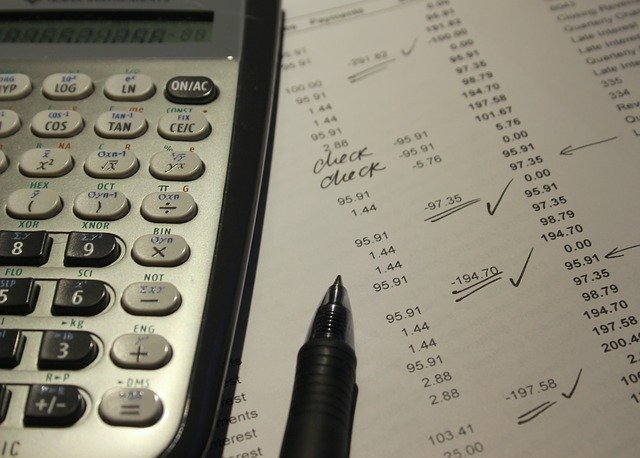GSBS 6130 – Corporate Finance
In the business environment, it is important for the firms to consider financial aspects to better manage their business activities. In the same concern of this, the report contains three parts of different tasks. This report is important to increase knowledge of NPV analysis, break even analysis and sensitivity analysis (Henderson, et al. 2015). At the same time, this report is also important to increase the understating how to choose a project plan by using NPV analysis.
Drug 1
Working Notes:
| Depreciation Schedule | |||||||||||
| Year 0 | Year 1 | Year 2 | Year 3 | Year 4 | Year 5 | Year 6 | Year 7 | Year 8 | Year 9 | Year 10 | |
| Investment cost | 50,00,000 | 50,00,000 | 45,00,000 | 40,00,000 | 35,00,000 | 30,00,000 | 25,00,000 | 20,00,000 | 15,00,000 | 10,00,000 | 5,00,000 |
| Depr | 5,00,000 | 5,00,000 | 5,00,000 | 5,00,000 | 5,00,000 | 5,00,000 | 5,00,000 | 5,00,000 | 5,00,000 | 5,00,000 | |
| Closing Value | 45,00,000 | 40,00,000 | 35,00,000 | 30,00,000 | 25,00,000 | 20,00,000 | 15,00,000 | 10,00,000 | 5,00,000 | – | |
| Note: The depreciation is calculated using straight line method which is $500,000 per annum. | |||||||||||
| Change in Working Capital | |||||||||||
| Year 0 | Year 1 | Year 2 | Year 3 | Year 4 | Year 5 | Year 6 | Year 7 | Year 8 | Year 9 | Year 10 | |
| Sales | 3,60,00,000 | 3,89,56,522 | 4,21,55,850 | 4,56,17,924 | 4,56,17,924 | 4,56,17,924 | 4,56,17,924 | 4,56,17,924 | 4,56,17,924 | 4,56,17,924 | |
| Net Working Capital | – 6,00,000 | – 72,00,000 | – 77,91,304 | – 84,31,170 | – 91,23,585 | – 91,23,585 | – 91,23,585 | – 91,23,585 | – 91,23,585 | – 91,23,585 | – 91,23,585 |
| Change in WC | – 6,00,000 | – 66,00,000 | – 5,91,304 | – 6,39,866 | – 6,92,415 | – | – | – | – | – | |
| NWC recovery | 91,23,585 | ||||||||||
| Total change in NWC | – 6,00,000 | – 66,00,000 | – 5,91,304 | – 6,39,866 | – 6,92,415 | – | – | – | – | – | 91,23,585 |
| Note: change in working capital is Inventory + A/c receivable – A/c payable which is equal to 600,000 | |||||||||||
The below tables show the calculated value of NPV for both proposals for drug development:
| Nominal cost of capital | 14% |
| Real cost of capital | 10.14% |
| Tax rate | 30% |
| Inflation | 3.5% |
| Nominal sales growth in the first 3 years | 12% |
| Real sales growth in the first 3 years | 8.2% |
| Salvage value | 3,00,000 |
| DESCRIPTION | YEAR 0 | YEAR 1 | YEAR 2 | YEAR 3 | YEAR 4 | YEAR 5 | YEAR 6 | YEAR 7 | YEAR 8 | YEAR 9 | YEAR 10 | |
| Development | -2,00,00,000 | |||||||||||
| Testing | -1,00,00,000 | |||||||||||
| Marketing | -1,20,00,000 | |||||||||||
| Equipment | -50,00,000 | |||||||||||
| Sales | 3,60,00,000 | 3,89,56,522 | 4,21,55,850 | 4,56,17,924 | 4,56,17,924 | 4,56,17,924 | 4,56,17,924 | 4,56,17,924 | 4,56,17,924 | 4,56,17,924 | ||
| Forgone Loss of Leasing Revenue | – 1,00,000 | – 1,00,000 | – 1,00,000 | – 1,00,000 | – 1,00,000 | – 1,00,000 | – 1,00,000 | – 1,00,000 | – 1,00,000 | – 1,00,000 | ||
| Fixed cost | -15,00,000 | -15,00,000 | -15,00,000 | -15,00,000 | -15,00,000 | -15,00,000 | -15,00,000 | -15,00,000 | -15,00,000 | -15,00,000 | ||
| Variable cost at 25% of sales for each year | -90,00,000 | -97,39,130 | -1,05,38,962 | -1,14,04,481 | -1,14,04,481 | -1,14,04,481 | -1,14,04,481 | -1,14,04,481 | -1,14,04,481 | -1,14,04,481 | ||
| Tax saving on depreciation | -5,00,000 | -5,00,000 | -5,00,000 | -5,00,000 | -5,00,000 | -5,00,000 | -5,00,000 | -5,00,000 | -5,00,000 | -5,00,000 | ||
| EBT | 2,49,00,000 | 2,71,17,391 | 2,95,16,887 | 3,21,13,443 | 3,21,13,443 | 3,21,13,443 | 3,21,13,443 | 3,21,13,443 | 3,21,13,443 | 3,21,13,443 | ||
| Tax of 30% | 74,70,000.0 | 81,35,217.4 | 88,55,066.2 | 96,34,032.9 | 96,34,032.9 | 96,34,032.9 | 96,34,032.9 | 96,34,032.9 | 96,34,032.9 | 96,34,032.9 | ||
| Profit after tax | 1,74,30,000 |
|
2,06,61,821 | 2,24,79,410 | 2,24,79,410 | 2,24,79,410 | 2,24,79,410 | 2,24,79,410 | 2,24,79,410 | 2,24,79,410 | ||
| Add back depreciation | 5,00,000 | 5,00,000 | 5,00,000 | 5,00,000 | 5,00,000 | 5,00,000 | 5,00,000 | 5,00,000 | 5,00,000 | 5,00,000 | ||
| Cash flow from operation | 1,79,30,000 | 1,94,82,174 | 2,11,61,821 | 2,29,79,410 | 2,29,79,410 | 2,29,79,410 | 2,29,79,410 | 2,29,79,410 | 2,29,79,410 | 2,29,79,410 | ||
| salvage value of plant written off | 2,10,000 | |||||||||||
| Change in Working Capital | – 6,00,000 | – 66,00,000 | – 5,91,304 | – 6,39,866 | – 6,92,415 | 91,23,585 | ||||||
| Net Cash flow | – 4,76,00,000 | 1,13,30,000 | 1,88,90,870 | 2,05,21,955 | 2,22,86,995 | 2,29,79,410 | 2,29,79,410 | 2,29,79,410 | 2,29,79,410 | 2,29,79,410 | 3,23,12,995 |
| Discount Rate | 10.14% |
| NPV | 8,00,19,136.56 |
| IRR | 37% |
Drug 2
Working Note:
| Depreciation Schedule | |||||||||||
| Year 0 | Year 1 | Year 2 | Year 3 | Year 4 | Year 5 | Year 6 | Year 7 | Year 8 | Year 9 | Year 10 | |
| Investment cost | 50,00,000 | 50,00,000 | 45,00,000 | 40,00,000 | 35,00,000 | 30,00,000 | 25,00,000 | 20,00,000 | 15,00,000 | 10,00,000 | 5,00,000 |
| Depr | 5,00,000 | 5,00,000 | 5,00,000 | 5,00,000 | 5,00,000 | 5,00,000 | 5,00,000 | 5,00,000 | 5,00,000 | 5,00,000 | |
| Closing Value | 45,00,000 | 40,00,000 | 35,00,000 | 30,00,000 | 25,00,000 | 20,00,000 | 15,00,000 | 10,00,000 | 5,00,000 | – | |
| Note: The depreciation is calculated using straight line method which is $500,000 per annum. | |||||||||||
| Change in Working Capital | |||||||||||
| Year 0 | Year 1 | Year 2 | Year 3 | Year 4 | Year 5 | Year 6 | Year 7 | Year 8 | Year 9 | Year 10 | |
| Sales | 1,74,50,000 | 1,86,71,500 | 1,99,78,505 | 2,13,77,000 | 2,28,73,390 | 2,44,74,528 | 2,61,87,745 | 2,80,20,887 | 2,99,82,349 | 3,20,81,113 | |
| Net Working Capital | – 6,00,000 | – 34,90,000 | – 37,34,300 | – 39,95,701 | – 42,75,400 | – 45,74,678 | – 48,94,906 | – 52,37,549 | – 56,04,177 | – 59,96,470 | – 64,16,223 |
| Change in WC | – 6,00,000 | – 28,90,000 | – 2,44,300 | – 2,61,401 | – 2,79,699 | – 2,99,278 | – 3,20,227 | – 3,42,643 | – 3,66,628 | – 3,92,292 | – 4,19,753 |
| NWC recovery | 64,16,223 | ||||||||||
| Total change in NWC | – 6,00,000 | – 28,90,000 | – 2,44,300 | – 2,61,401 | – 2,79,699 | – 2,99,278 | – 3,20,227 | – 3,42,643 | – 3,66,628 | – 3,92,292 | 59,96,470 |
| Note: change in working capital is Inventory + A/c receivable – A/c payable which is equal to 600,000 | |||||||||||
| Nominal cost of capital | 14% |
| Real cost of capital | 10.14% |
| Tax rate | 30% |
| Inflation | 3.5% |
| Nominal sales growth in the first 3 years | 7% |
| Real sales growth in the first 3 years | 3.4% |
| Salvage value | 3,00,000 |
| DESCRIPTION | YEAR 0 | YEAR 1 | YEAR 2 | YEAR 3 | YEAR 4 | YEAR 5 | YEAR 6 | YEAR 7 | YEAR 8 | YEAR 9 | YEAR 10 | |
| Development | ||||||||||||
| Testing | ||||||||||||
| Marketing | -1,00,00,000 | |||||||||||
| Equipment | -50,00,000 | |||||||||||
| Sales | 1,74,50,000 | 1,86,71,500 | 1,99,78,505 | 2,13,77,000 | 2,28,73,390 | 2,44,74,528 | 2,61,87,745 | 2,80,20,887 | 2,99,82,349 | 3,20,81,113 | ||
| Forgone Loss of Leasing Revenue | – 1,00,000 | – 1,00,000 | – 1,00,000 | – 1,00,000 | – 1,00,000 | – 1,00,000 | – 1,00,000 | – 1,00,000 | – 1,00,000 | – 1,00,000 | ||
| Fixed cost | -15,00,000 | -15,00,000 | -15,00,000 | -15,00,000 | -15,00,000 | -15,00,000 | -15,00,000 | -15,00,000 | -15,00,000 | -15,00,000 | ||
| Variable cost at 25% of sales for each year | -43,62,500 | -46,67,875 | -49,94,626 | -53,44,250 | -57,18,348 | -61,18,632 | -65,46,936 | -70,05,222 | -74,95,587 | -80,20,278 | ||
| Tax saving on depreciation | -5,00,000 | -5,00,000 | -5,00,000 | -5,00,000 | -5,00,000 | -5,00,000 | -5,00,000 | -5,00,000 | -5,00,000 | -5,00,000 | ||
| EBT | 1,09,87,500 | 1,19,03,625 | 1,28,83,879 | 1,39,32,750 | 1,50,55,043 | 1,62,55,896 | 1,75,40,808 | 1,89,15,665 | 2,03,86,762 | 2,19,60,835 | ||
| Tax of 30% | 32,96,250.0 | 35,71,087.5 | 38,65,163.6 | 41,79,825.1 | 45,16,512.8 | 48,76,768.7 | 52,62,242.5 | 56,74,699.5 | 61,16,028.5 | 65,88,250.5 | ||
| Profit after tax | 76,91,250 |
|
90,18,715 | 97,52,925 | 1,05,38,530 | 1,13,79,127 | 1,22,78,566 | 1,32,40,966 | 1,42,70,733 | 1,53,72,584 | ||
| Add back depreciation | 5,00,000 | 5,00,000 | 5,00,000 | 5,00,000 | 5,00,000 | 5,00,000 | 5,00,000 | 5,00,000 | 5,00,000 | 5,00,000 | ||
| Cash flow from operation | 81,91,250 | 88,32,538 | 95,18,715 | 1,02,52,925 | 1,10,38,530 | 1,18,79,127 | 1,27,78,566 | 1,37,40,966 | 1,47,70,733 | 1,58,72,584 | ||
| salvage value of plant written off | 2,10,000 | |||||||||||
| Change in Working Capital | – 6,00,000 | – 28,90,000 | – 2,44,300 | – 2,61,401 | – 2,79,699 | – 2,99,278 | – 3,20,227 | – 3,42,643 | – 3,66,628 | – 3,92,292 | 59,96,470 | |
| Net Cash flow | – 1,56,00,000 | 53,01,250 | 85,88,238 | 92,57,314 | 99,73,226 | 1,07,39,252 | 1,15,58,900 | 1,24,35,923 | 1,33,74,337 | 1,43,78,441 | 2,20,79,054 |
| Discount Rate | 10.14% |
| NPV | 5,00,17,681.95 |
| IRR | 52% |
Net present value demonstrates the distinction between the present value of money inflows and outflows, which is used to take the choice about the investment project. As a procedure, it does worth the investors in light of the fact that through this, investors can settle on better investment decisions by measuring the present value of the cash flows on speculation (Lawrence, 2013). In the project, if the NPV is negative or lower, at that point the venture ought to be rejected. Higher NPV demonstrates the feasibility of the investment in any project (Martin, 2013). This method is the best measure because it is helpful to increase the firm’s value and also gives the importance to the time value of money. This method is effective because high priority is given to the project’s profitability and risk. But, this method is complex to use and determine the correct discount rate.
The project that provides higher NPV is selected for the investment. Net present value reflects the differences between the net cash inflows and net cash outflows. Higher NPV shows the higher returns for the investors. From the above calculated NPVs, it can be determined that Roche should invest in the development of drug 1 because it will provide higher returns to the investors (McKendrick, 2012). The drug 1 will provide the NPV of $8,00,19,136.56 and drug 2 will provide $5,00,17,681.95 on investment (Needles, et al. 2010). At the same time, IRR is also calculated for both proposals, which is the minimum return that the investors require in their investment. From the calculation of IRR, it is found that IRR for drug 2 is higher (52%) than that of drug 1 (37%). But, the use of IRR is not effective for longer-term projects with discount rates that are expected to vary.

Sensitivity analysis is a significant technique that is helpful to define how the different value of independent variable affects the value of the dependent variable. This technique shows the changes in the given data set with focusing some assumption. The study on the sensitivity analysis depicts that how the uncertainty in the input influences the value of the output. Sensitivity analysis is helpful to the financial manager to identify the elements or variables that can affect the cash flow (Duckert, 2010). It is also useful to understand the overall investment project in the effective manner. At the same time, it is also found that sensitivity analysis indicates toward some vital variable that is helpful to obtain some additional information. By the help of this analysis, the decision maker can make strong the project. It means that sensitivity analysis helps to identify the weak spot of the project.
Sensitivity analysis is also important to exhibit appropriate forecasts that help to the decision maker to focus on the relevant variables. But, at the same time, Dutta (2013) states some limitation of the sensitivity analysis. It depicts that sensitivity analysis does not provide the effective and usable results. In this, pessimistic and optimistic can mean different things for different people. Along with this, it does not analyze the interrelationship between underlying variable. For example, the value of sale can be relevance to price and cost but this analysis measures both variables separately.
| Sensitivity Analysis | NPV |
| Sales (drug1) | |
| 25% higher(20% chance ) | 8,82,64,177.95 |
| 25% lower(40% chance) | 7,21,59,119.92 |
| Most likely (Base case) | 8,00,19,136.56 |
| Variation between optimistic and pessimistic NPV | 1,61,05,058.03 |
The above sensitivity analysis shows that there are 2 scenarios for 4 financial years. The above table depicts that there 20% chance that sales will happen 25% higher and 40% chance that sales will happen 25% lower. From this, it is found that in the first financial year the sales will $8,82,64,177.95. On the other hand, in second scenario sales will 7,21,59,119.92. Form this sensitivity analysis, it can be understood that how changes happen due to changes in the variables (Ghosh, 2012).
| Sensitivity Analysis | NPV |
| variable Cost | |
| for 35% of total sales(25% chance ) | 6,16,96,496.78 |
| for 22% of total sales(25% chance ) | 8,55,15,928.50 |
| Most likely (Base case) | 8,00,19,136.56 |
| Variation between optimistic and pessimistic NPV | 2,38,19,431.72 |
The above sensitivity analysis is regarding the variable cost of the drug LDE225. In this analysis, there are two scenarios that determine different probability in different cases. In the both scenario, the probability is equal to 0.25 (25%). From the scenario 1, it is identified that there is 25% chance that variable costs will 35% of the sale and sale is estimated $6,16,96,496.78 (Jones & Burger, 2011). Therefore, sensitivity variable cost is calculated $3.15 million. At the same time, scenario 2 depicts that there is 25% chance that variable cost will 22% of the total sales. Thus, sensitivity variable cost is identified $8,55,15,928.50.
| Sensitivity Analysis | NPV |
| initial marketing cost (drug1) | |
| 25% lower (10% chance) | 8,85,15,928.50 |
| 25% higher (40% chance) | 8,25,15,928.50 |
| Most likely (Base case) | 8,00,19,136.56 |
| Variation between optimistic and pessimistic NPV | 60,00,000.00 |
In the context of sensitivity analysis for marketing cost, it is found that there are also two scenarios. The sensitivity table shows that the probability of scenario 1 is 0.1 (10%) and probability for scenario 2 is 0.4 (40%). The study of the scenario 1 determines that there is 10% chance that initial marketing cost may be 25% lower from the estimated amount. However, it was estimated $12 million in the starting. On the basis of this information, sensitivity initial marketing cost is calculated as $8,85,15,928.50. At the same time, it is also found that there is 40% chance that initial marketing cost may be 25% higher from the estimated cost (King, 2011). According to this information, sensitivity initial marketing cost is calculated as $8,25,15,928.50. The sensitivity analysis demonstrates that the estimate of NPV is more sensitive to changes in variables than to changes in sales growth and initial marketing investment. The difference between the optimistic and pessimistic NPV is much larger for sales and variable cost than initial marketing cost.

In the financial management, break-even point analysis is an important technique of the performance measurement. In the other words, it is a measurement system that is used to know that whether the project will be profitable or not by equating its total revenues with its total expenses. There are different purposes of using the equation of breakeven but deals with financial accounting and accounting management (Loader, 2011). In the financial management, break even method is a significant and useful tool. Along with this, the tool is also easy to use and understand. By the help of this tool, it is easy for the corporation to make decision. The break even analysis helps to choose the one project between two or more projects on the basis of cost and profitability. This tool helps in planning in the manufacturing items by focusing towards the fixed cost and profit. In the same concern of this, (Brigham & Ehrhardt, 2011) define that in the accounting management; break even is a point that shows how much units required to sales to cover capital cost.
It can be calculated by using the below formula:
BEP = Fixed cost/ 1-(Variable cost/ Sales)
Along with this, it is also important to identify in the required sales to cover the invested capital. It also plays an effective as the cost controller device. The break even analysis offers an understanding of the nature of profit in against of sales output. The developed understanding is important to select the source of finance and making other important financial decision (Lasher, 2013). But, at the same time, break even analysis includes a lot of the limitation. It is found that break even analysis do not consider some cost and their components. This tool is not effective when the company sells various products because that time it is difficult to calculate the profit on the basis of different products costs.
The above table depicts the break even analysis for different years based on given information. The break even analysis is calculated on the basis of fixed cost, sales and variable cost. In this, the first year shows that fixed cost is $1500000.0. At the same time, sales and variable cost are $36000000 and $9000000 in the given order. In this scenario, break even analysis is computed $2000000. It means that when Roche Products Pty Limited will sell the drugs with amount of $2000000, the profit will be zero (Muller, 2011). Furthermore, in the reference of next years, it is found that fixed cost is same as but sales and variable cost are different from first year, but in the same ratio. On the basis of this information, it is found that break even will be the same like first year due to no variation in variable cost as respect to the sales. This result posits that when Roche Products Pty Limited will sell the drug with amount of $2000000 then the sales and costs will be equal (Henderson, et al. 2015).
The food and drug administration is a kind of federal agency that is established for purpose of providing offering a better quality product for society. FDA is liable for proactive the human being life. A pharmaceutical company has to take approval from the FDA before lancing the drug in the market. In this approval process, FDA can take more time due to the long procedure. In the approval process of the drug, FDA examines the several points (Martin, 2013).

It is a battle for the pharmaceutical firms to get drug approval. The launching of a new drug is more than just a taste of victory for pharmaceutical companies. If there is a delay in approval from FDA, it may cause a loss of billions of dollars and harm the patients awaiting the arrival of a potential cure (McKendrick, 2012). It may be harmful for the firm to receive the approval as it can be effective to delay the launch the drug in the market. In this case, the decision of the product development manager can be changed. It is possible that the selling price of the drug can be increased. Along with this, the way of marketing will also change because it has been seen that marketing idea changes instantly in the market. Additionally, as concerning of increasing cost, it is also possible that the product development manager can decide to stop the plan of launching the drug in the market (Dutta, 2013). It is because the decision may be a cause of a big loss to the company.
It guides the product development manager to evaluate and measure the different aspects that can affect the profitability of the project. At the same time, it can also be summarized that the performance analysis techniques such as net present value and break even is also important to make the decision on a project.
Brigham, E. F. &Ehrhardt, M. C. (2011) Financial Management: Theory and Practice. USA: Cengage Learning.
Duckert, G.H. (2010) Practical Enterprise Risk Management: A Business Process Approach. Canada: John Wiley & Sons.
Dutta, S.K. (2013) Statistical Techniques for Forensic Accounting: Understanding the Theory and Application of Data Analysis. USA: FT Press.
Experience. UK: Routledge.
Ghosh, A. (2012) Managing Risks in Commercial and Retail Banking. USA: Wiley.
Henderson, S., Peirson, G., Herbohn, K. and Howieson, B. (2015) Issues in financial accounting. Pearson Higher Education AU.
Jones, P. & Burger, J. (2011) Configuring SAP ERP Financials and Controlling. USA: John Wiley & Sons.
King, A. M. (2011) Internal Control of Fixed Assets: A Controller and Auditor’s Guide. USA: John Wiley & Sons.
Lasher, W. R. (2013) Practical Financial Management. USA: Cengage Learning.
Lawrence, R.P. (2013) A Guide To College Resource And Financial Management. UK: Routledge.
Loader, D. (2011) Operations Risk: Managing a Key Component of Operational Risk. UK: Butterworth-Heinemann.
Martin, I. (2013) Making It Happen: Fred Goodwin, RBS and the men who blew up the British economy. UK: Simon and Schuster.
McKendrick, E. (2012) Contract Law: Text, Cases, and Materials. London: Oxford University Press.
Muller, M. (2011) Essentials of Inventory Management. USA: AMACOM Div American Mgmt Assn.
Needles, B.E., Powers, M &Crosson, S.V. (2010) Financial & Managerial Accounting. USA: Cengage Learning.


